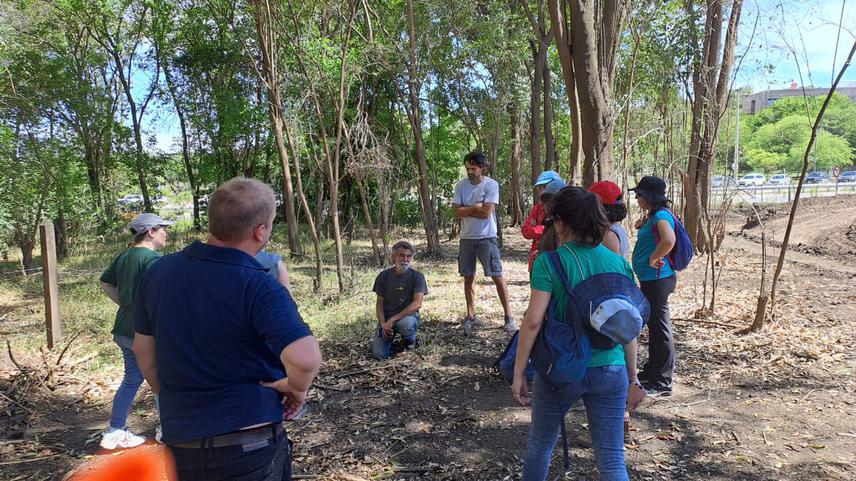Ángeles Fiorella Raffo
"Ecological Restoration of Chaco Serrano Forest Invaded by Ligustrum lucidum (Glossy Privet) in Central Argentina" is a project focused on the ecological restoration of the native forest, linked to the utilization of wood from this invasive woody species. It constitutes a significant part of my PhD, which is currently being developed at the Center for Renewable Natural Resources at the National University of Córdoba, Argentina.
Ligustrum lucidum, originally from Asia, is a highly invasive species that has caused a significant loss of biodiversity in Argentina and other countries around the world. In Argentina, it has been present for over 30 years, leading to the development of monospecific evergreen forests that invade native woodlands, resulting in simplified ecosystems.

Workshop guided tour to the area of native forest invaded by Ligustrum lucidum, Unquillo (Córdoba, Argentina). ©Ángeles Fiorella Raffo
Traditionally, the wood from this species has not been considered useful in our society. However, recent research by the "Habitat, Environment, and Territory" research group (CIECS-CONICET-UNC), which is the framework for this project, has demonstrated that Ligustrum wood has positive attributes for use as timber. The research group has confirmed that Ligustrum wood is suitable for construction and carpentry.
This ecological restoration project will be carried out in the Los Quebrachitos Municipal Recreational Natural Water Reserve (Unquillo, Córdoba), which is considered a representative sample of the entire biological corridor of the Sierras Chicas de Córdoba, both in terms of the invasion of this species and the high biodiversity of species found there. This reserve is publicly managed, and the strong working relationship that the "Habitat, Environment, and Territory" project has established with the municipal government, scientific research, and society is of great importance.
Managing an invasive species typically requires significant financial resources, making it often impractical to address this issue. In this regard, the main objective of the study is to design a protocol for the efficient acquisition of wood that, at the same time, mitigates the invasive advancement of the species and promotes the restoration of the native forest. This protocol will be provided to the municipality of Unquillo for use in controlling this invasive species, with the hope that it will be replicated in neighbouring municipalities in a second phase.
Header: Augusto observing a large specimen of Ligustrum lucidum that he has cut. ©Ángeles Fiorella Raffo.